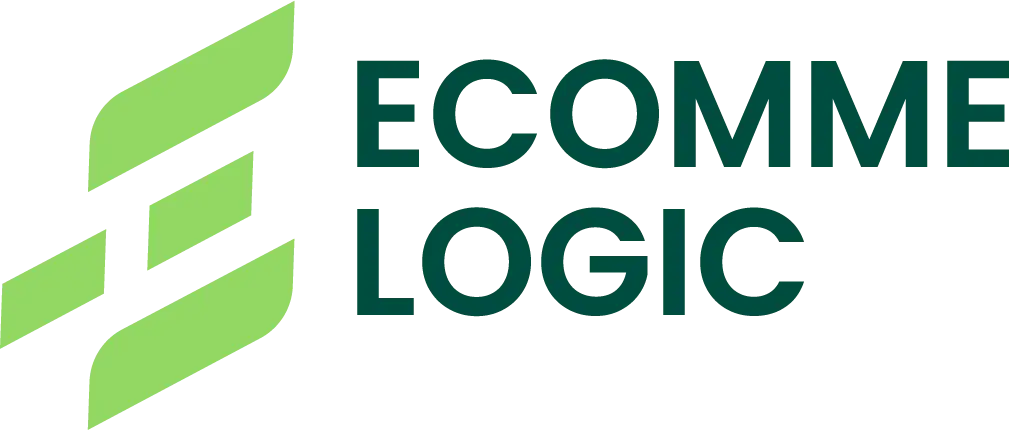Introduction
Inventory management can either accelerate your e-commerce growth — or silently erode your profitability. As your brand scales, managing stock levels, fulfilling orders, and optimizing warehouse operations become increasingly complex.
At EcommeLogic, we specialize in helping fast-growing online businesses streamline their backend systems — and effective inventory management is the cornerstone of that process.
Whether you’re managing a small product line or thousands of SKUs, the following expert tips will help you minimize waste, improve cash flow, and enhance customer satisfaction.

1. Leverage Inventory Management Software
Relying on spreadsheets might work in the beginning, but growing brands require automated systems for scalability. Invest in dedicated inventory management solutions such as:
- QuickBooks Commerce (TradeGecko)
- Zoho Inventory
- Shopify’s integrated tools
These platforms allow you to:
- Monitor stock levels in real-time
- Forecast demand using historical data
- Sync inventory seamlessly across all sales channels

2. Establish Par Levels and Maintain Safety Stock
Avoid stockouts and missed sales opportunities by defining par levels — the minimum quantity of each product you should always have in stock. Once inventory falls below that threshold, your system should prompt a reorder.
Also, maintain safety stock to protect against unexpected spikes in demand or supply chain disruptions.

3. Forecast Demand Accurately
Inventory forecasting isn’t guesswork — it’s a data-driven process. Use your historical sales data, marketing calendars, and seasonal trends to anticipate future demand.
Consider:
- Upcoming promotions or influencer campaigns
- Historical spikes around holidays (e.g., Black Friday, Eid, Christmas)
- Trends in customer behavior or market condition
EcommeLogic offers analytics integration to help your forecasting stay precise and proactive.
4. Conduct Regular Inventory Audits
Automation is powerful, but physical checks remain essential. Implement:
- Cycle counts — regular, partial audits of specific inventory categories
- Full inventory audits — performed quarterly or bi-annually
Audits help you:
- Detect discrepancies or losses
- Identify slow-moving or obsolete stock
- Validate the accuracy of your digital inventory records
5. Apply ABC Inventory Analysis
Prioritize your inventory management efforts using the ABC method:
- A-items: High-value, low-quantity — require tight control
- B-items: Moderate value and movement — standard oversight
- C-items: Low-value, high-volume — simple stock management
Focus your time, capital, and attention on “A” items that drive the majority of your revenue.
6. Strengthen Supplier Relationships
Your supply chain is only as strong as your communication with vendors. Build strong supplier partnerships by:
- Sharing sales forecasts ahead of time
- Setting clear expectations and delivery schedules
- Establishing backup suppliers for critical SKUs


7. Sync Inventory Across All Sales Channels
Selling across multiple platforms — such as your Shopify store, Amazon, Daraz, or Instagram Shop — is great for reach, but risky if inventory isn’t properly synchronized.
Choose an inventory system that:
- Centralizes stock updates across all channels
- Prevents overselling and understocking
- Reflects real-time product availability to customers

8. Optimize Warehouse Organization
An efficient warehouse directly impacts your fulfillment speed and order accuracy. Whether you manage your own space or use a third-party logistics (3PL) provider:
- Organize inventory by product type, popularity, or season
- Implement barcode scanning and digital shelf labels
- Keep top-selling items easily accessible
For brands using 3PLs, confirm that your partners follow lean and efficient inventory practices.

Conclusion
Inventory management is more than just a backend process — it’s a key driver of profitability, customer satisfaction, and sustainable growth.
By adopting the right tools, practices, and systems, your e-commerce brand can reduce costs, prevent lost sales, and scale with confidence.
Ready to scale your operations with confidence?
Partner with EcommeLogic to implement smart inventory systems, streamline your backend, and power your growth — from backend to checkout.

